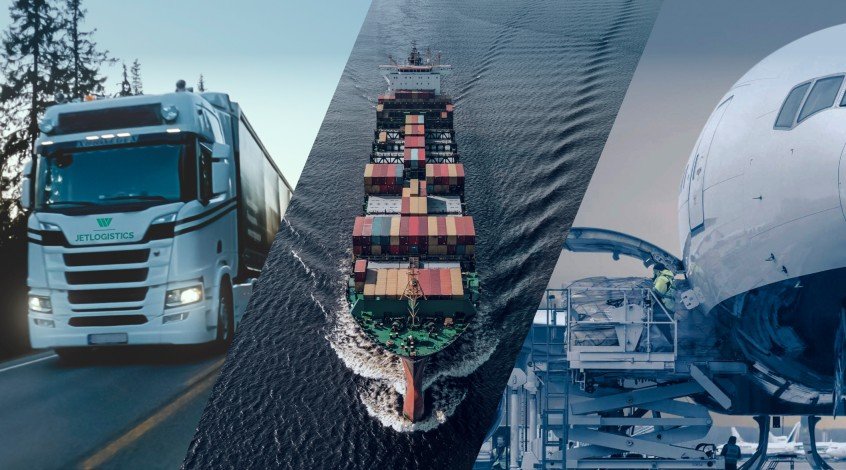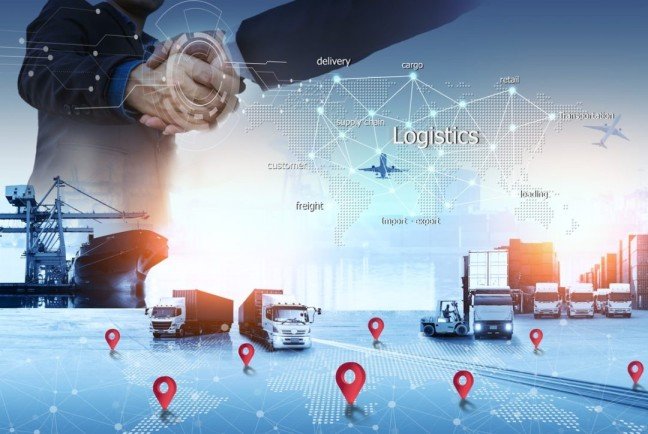
In the ever-evolving world of the hiking backpack industry, logistics and shipping stand as pillars of paramount importance. These backpacks, meticulously designed for durability, comfort, and functionality, find their way to the farthest corners of the globe, ensuring that adventurers are well-equipped for their journeys. But behind every backpack that arrives at a retail store or an individual’s doorstep is a complex network of logistics and shipping operations, each step calibrated for precision.
For global sourcers, navigating this intricate web is no simple task. They grapple with a multitude of challenges ranging from customs regulations, fluctuating shipping rates, and ensuring timely deliveries to managing relationships with suppliers scattered across different continents. While the end goal is clear – to provide consumers with top-quality hiking backpacks when and where they need them – the path to achieving this is riddled with potential pitfalls. This article delves deep into the world of logistics and shipping in the hiking backpack industry, shedding light on ways to streamline operations and tackle the inherent challenges head-on.
1. The Current State of Logistics in the Hiking Backpack Industry

A Historical Perspective on Logistics Trends:
- The Earlier Days: In the initial phases, the hiking backpack market was largely localized. Artisans and small-scale manufacturers catered to local communities, making logistics a relatively straightforward affair. The emphasis was on ground transportation, with limited international distribution.
- Globalization Era: As outdoor recreation gained traction and globalization took root, the demand for hiking backpacks grew exponentially. Brands began to expand overseas, prompting a more intricate logistics framework. Sea and air freight became predominant modes of transportation, connecting manufacturers in one continent to markets in another.
- Rise of E-commerce: The dawn of the digital age transformed not just how consumers shopped but also how products reached them. Direct-to-consumer shipping became a vital component, necessitating more efficient and faster logistics solutions. Warehousing and distribution strategies had to evolve, with the rise of fulfillment centers specifically catering to online sales.
Present-Day Challenges and Bottlenecks:
- Complex Supply Chains: As the industry expanded, so did the supply chain. Today, a single hiking backpack might have materials sourced from multiple countries, assembled in another, and sold globally. This complexity often leads to delays and inefficiencies.
- Customs and Regulations: Navigating the varied customs regulations and import/export duties of different countries is a significant challenge. Any misstep can result in costly delays or penalties.
- Sustainability Pressures: Modern consumers are increasingly conscious of their environmental footprint. The challenge lies in finding logistics solutions that are both efficient and eco-friendly, from sustainable packaging to carbon-neutral shipping options.
- Inventory Management: Predicting demand is more challenging than ever, especially given the rapid shifts in consumer behavior. Overstocking can lead to high holding costs, while understocking risks lost sales.
- Rising Costs: From fuel prices to labor costs, multiple factors are pushing logistics expenses upward. Balancing cost-efficiency with timely and safe delivery is a tightrope many in the industry walk.
2. Understanding the Core Components of Hiking Backpack Shipping

Transporting hiking backpacks from manufacturers to consumers is a task that demands meticulous planning, especially when considering the varied shipping methods and the unique packaging needs of these products. Let’s delve into the core components that define how hiking backpacks journey across the globe.
Different Shipping Methods:
- Air:
- Pros: Fastest mode of transportation, ideal for meeting tight delivery deadlines or shipping to landlocked regions.
- Cons: Generally the most expensive mode, has a higher carbon footprint, and may have weight and volume restrictions.
- Sea:
- Pros: Cost-effective for bulk shipments, especially for intercontinental deliveries.
- Cons: Slower transit times, potential for delays due to port congestions or adverse weather conditions, and requires efficient inland transportation for final delivery.
- Rail:
- Pros: An effective and speedy solution for land-based international shipping, especially prominent in regions like Europe and parts of Asia.
- Cons: Limited to regions with established rail networks, potential for disruptions, and can be slower than road or air options for shorter distances.
- Road:
- Pros: Flexible and direct, ideal for intra-country transportation or short international routes.
- Cons: Can be affected by road conditions, traffic, and border checks, and may not be feasible for longer international shipments.
Packaging Considerations Specific to Hiking Backpacks:
- Protection:
- Hiking backpacks, especially those with built-in frames or specialized materials, require robust protection against potential damages.
- Using bubble wrap, foam inserts, or air pillows can prevent damage from impacts during transit.
- Waterproof packaging or sealable plastic bags can shield the product from moisture, especially crucial for sea shipments.
- Size:
- Efficiently packaging hiking backpacks ensures optimal use of shipping space, thus saving costs.
- Collapsing or folding backpacks in a standardized manner can aid in uniform packaging.
- Weight:
- While hiking backpacks are generally lightweight, the accumulated weight in bulk shipments can impact shipping costs.
- It’s crucial to have accurate weight measurements to avoid additional charges and to choose the most cost-effective shipping method.
- Balancing the protective packaging with weight considerations is essential to ensure the product’s safety without incurring unnecessary costs.
3. Strategies to Streamline Logistics with Suppliers

The efficiency of the logistics chain is pivotal to the success of any industry, especially one as dynamic as the hiking backpack market. Streamlining logistics is not just about cost savings—it’s about ensuring timely deliveries, minimizing errors, and enhancing overall operational efficiency. With suppliers playing a key role in this chain, forging a seamless working relationship with them becomes crucial. Here’s a closer look at some strategies to enhance and streamline logistics with hiking backpack suppliers:
- Building Strong Communication Channels with Manufacturers:
- Open Dialogue: Regularly scheduled meetings, be they in-person or virtual, can ensure both parties are aligned in their goals and expectations.
- Feedback Mechanism: Create avenues for constant feedback, allowing both suppliers and sourcers to address concerns and iterate on processes.
- Emergency Protocols: Establish clear communication procedures for emergencies, ensuring swift action in case of disruptions or unforeseen challenges.
- Utilizing Technology and Software for Real-Time Tracking and Updates:
- Tracking Systems: Implement GPS-based tracking systems to monitor shipments in real-time, allowing for better planning and timely interventions if needed.
- Integrated Software: Adopt platforms that allow for end-to-end logistics management, from order placement to final delivery.
- Mobile Solutions: Use mobile apps to facilitate on-the-go monitoring and communication, ensuring stakeholders are always in the loop, irrespective of their location.
- Regularly Reviewing and Renegotiating Shipping Contracts:
- Benchmarking: Regularly compare current shipping rates with market standards to ensure you’re getting competitive rates.
- Volume Discounts: As your business grows, renegotiate terms based on increased shipment volumes, which often lead to better rates.
- Flexibility Clauses: Ensure your contracts have provisions for flexibility, allowing for adjustments based on seasonality, market fluctuations, or unforeseen global events.
- Considering Consolidation Centers or Warehouses for Bulk Shipments:
- Centralized Distribution: Using a consolidation center can streamline the shipment process, allowing for bulk transportation to the center, followed by localized distribution.
- Inventory Management: Warehouses can aid in better inventory management, ensuring products are available for shipment as and when demand arises.
- Cost Efficiency: Bulk shipments to a central location can lead to cost savings in transportation, especially when leveraging sea or rail freight for large quantities.
- Quick Turnaround: With products stored in strategic locations, the response time to market demands can be significantly reduced, leading to quicker deliveries.
4. Addressing Common Shipping Challenges

The journey of a hiking backpack, from the manufacturer’s floor to a consumer’s home, is fraught with potential challenges. Whether it’s navigating the intricate maze of customs or battling unpredictable weather patterns, shipping is as much about problem-solving as it is about transportation. Let’s delve into some of these common challenges and strategies to address them:
- Delays Due to Customs and Import/Export Regulations:
- Stay Informed: Regularly update your knowledge on the import/export regulations of the countries you’re shipping to and from. Regulatory landscapes can change, and staying abreast of these changes is vital.
- Detailed Documentation: Ensure all shipment-related documents are complete, accurate, and accessible. This includes product descriptions, value declarations, and any necessary certifications.
- Customs Broker: Consider hiring a customs broker or an expert familiar with the specific customs regulations of your target market. They can expedite the customs clearance process and handle any issues that may arise.
- Plan for Delays: While prevention is key, always factor in potential customs-related delays in your shipping timelines to manage expectations.
- Weather-related Interruptions and How to Plan for Them:
- Advanced Weather Monitoring: Use advanced weather tracking systems to stay informed about potential disruptions, be it storms, hurricanes, or other adverse conditions.
- Alternative Routes: Always have backup transportation routes or methods in case the primary one is affected by weather conditions. This could mean considering different shipping ports or switching from road to rail.
- Buffer Time: Factor in potential weather-related delays when promising delivery dates. It’s always better to under-promise and over-deliver.
- Communication: Keep open channels with your suppliers, logistics partners, and customers. Informing stakeholders of potential delays due to weather can manage expectations and build trust.
- Managing the Risks of Damaged Goods in Transit:
- Quality Packaging: Invest in high-quality packaging that offers adequate protection. For hiking backpacks, consider protective layers, sturdy boxes, and moisture barriers.
- Insurance: Ensure your shipments are insured. This not only provides financial protection but also indicates to your logistics partners that they must handle the cargo with care.
- Training: If you have control or influence over handling, ensure that staff is trained on best practices for handling goods.
- Regular Audits: Conduct regular checks and audits of received goods to assess the rate and nature of damages. Use this data to make improvements in packaging or to address issues with specific logistics partners.
- Feedback Loop: Establish a system where customers can easily report damaged goods. This not only aids in addressing individual concerns but also provides insights into where the damage might be occurring in the transit process.
5. Future Trends in Logistics and Shipping for the Industry

The global logistics and shipping landscape is undergoing transformative changes, propelled by technological advancements, evolving consumer behaviors, and a heightened awareness of environmental considerations. The hiking backpack industry, with its global reach and intricate supply chains, stands at the crossroads of these changes. Let’s explore some key future trends that will shape the industry’s logistics and shipping paradigms:
- The Impact of E-commerce and Direct-to-Consumer Shipping:
- Decentralized Warehousing: As demand for faster deliveries grows, we’ll likely see a rise in decentralized warehousing, with brands storing products closer to key consumer hubs.
- Personalized Shipping Options: E-commerce platforms might offer more customized shipping choices, such as specified delivery windows or environmentally friendly options.
- Returns and Reverse Logistics: With online shopping comes the inevitable challenge of returns. Efficient reverse logistics will become paramount, ensuring products are returned, refurbished, and resold with minimal delays or wastage.
- Potential Innovations like Drones or Autonomous Vehicles in the Supply Chain:
- Drone Deliveries: For areas that are hard to reach, such as remote regions or congested urban environments, drones could offer a faster and more direct delivery method.
- Autonomous Trucks and Vessels: The long-haul shipping segment, be it on roads or at sea, might witness a shift towards autonomous vehicles. These can operate around the clock, potentially increasing efficiency and reducing transit times.
- Advanced Tracking Systems: With the integration of IoT (Internet of Things) and AI (Artificial Intelligence), real-time tracking will become more sophisticated, offering precise location data and predictive analytics on potential delays or issues.
- The Role of Sustainability in Shaping Future Logistics Practices:
- Carbon-neutral Shipping: More brands might offer, or even mandate, carbon-neutral shipping options, offsetting emissions through various environmental initiatives.
- Sustainable Packaging: The hiking backpack industry could move towards more eco-friendly packaging solutions, reducing single-use plastics and opting for materials that are biodegradable or recyclable.
- Circular Supply Chains: Beyond just product creation, brands may focus on the entire lifecycle of a hiking backpack, ensuring old or damaged products are recycled, repurposed, or disposed of in an environmentally-friendly manner.
- Green Transportation: As concerns about climate change intensify, there might be a push towards greener transportation options, be it electric trucks, solar-powered vessels, or other innovations that reduce the carbon footprint of shipping.
6. Conclusion
The realm of logistics and shipping, especially within the hiking backpack industry, is a constantly evolving tapestry of innovation, challenges, and opportunities. As we’ve explored, from the rise of e-commerce to the promise of drone deliveries and the ever-critical emphasis on sustainability, the horizon is filled with transformative potential. For businesses, understanding these shifts is not just about staying relevant—it’s about leading the way, setting standards, and shaping the future of global commerce. It’s about forging paths that are not only efficient and cost-effective but also responsible and sustainable.
At Airscape Textile, we’re not just about business. We’re about forging lasting relationships, understanding your needs, and ensuring that every backpack sourced is a step towards enhancing your brand and satisfying your customers. So, let’s embark on this exciting journey together. Welcome aboard, and here’s to a fruitful partnership and countless adventures ahead. Contact us now by filling out the form on this page or just click here.


